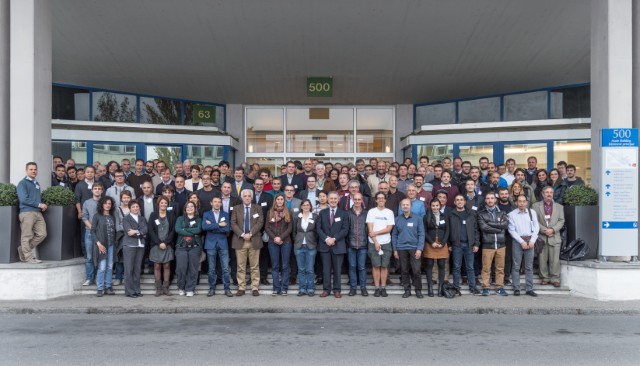More than 230 scientists and engineers from around the world, including several from the Cockcroft Institute, met at CERN this October to discuss the High-Luminosity LHC – a major upgrade to the Large Hadron Collider (LHC) that will increase the accelerator’s discovery potential from 2025. After a four year long design study the project is now moving into its second phase, which will see the development of industrial prototypes for various parts of the accelerator.
Luminosity is a crucial indicator of performance for an accelerator. It is proportional to the number of particles colliding within a defined amount of time. Since discoveries in particle physics rely on statistics, the greater the number of collisions, the more chances physicists have to see
a particle or process that they have not seen before. The High-Luminosity LHC will increase the luminosity by a factor of 10,delivering 10 times more collisions than the LHC would do over the same
period of time. It will therefore provide more accurate measurements of fundamental particles and enable physicists to observe rare processes that occur below the current sensitivity level of the LHC.
Upgrading the LHC will be a challenging procedure and relies on several breakthrough technologies currently under development.
“We have to innovate in many fields, developing cutting-edge technologies for magnets, the optics of the accelerator, superconducting radiofrequency cavities, and superconducting links,” explained Lucio Rossi, Head of the High-Luminosity LHC project.
Part of this includes the development of brand new superconducting radiofrequency cavities, called “crab cavities”, which will be used to orientate the beam before the collision to increase the length of the area where the beams overlap. Engineers and scientists at the Cockcroft are collaborating with CERN and US labs to develop these crab cavities and there cryogenic systems.
Further information:
http://home.cern/about/accelerators/high-luminosity-large-hadron-collider
http://home.cern/new-technologies-high-luminosity-lhc
http://hilumilhc.web.cern.ch/
http://cds.cern.ch/record/2063308
https://cds.cern.ch/record/2063307

